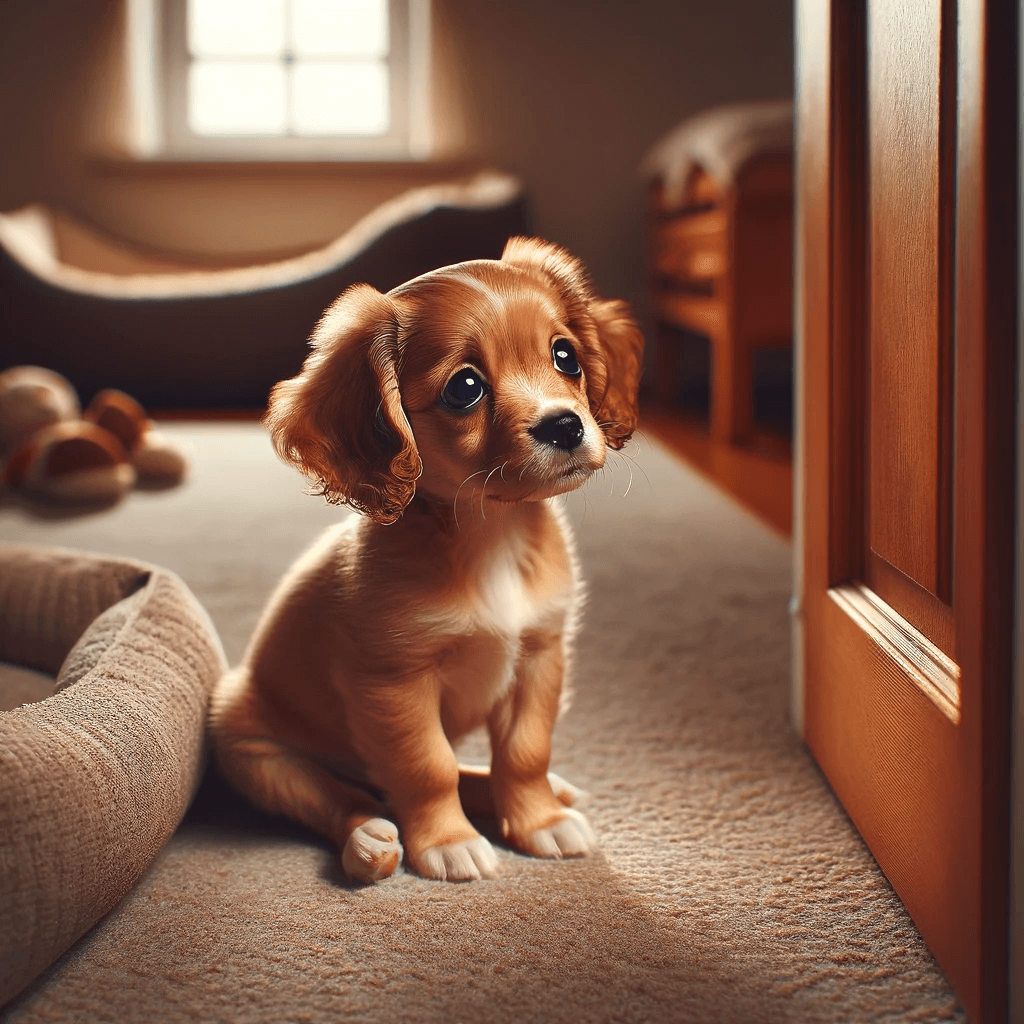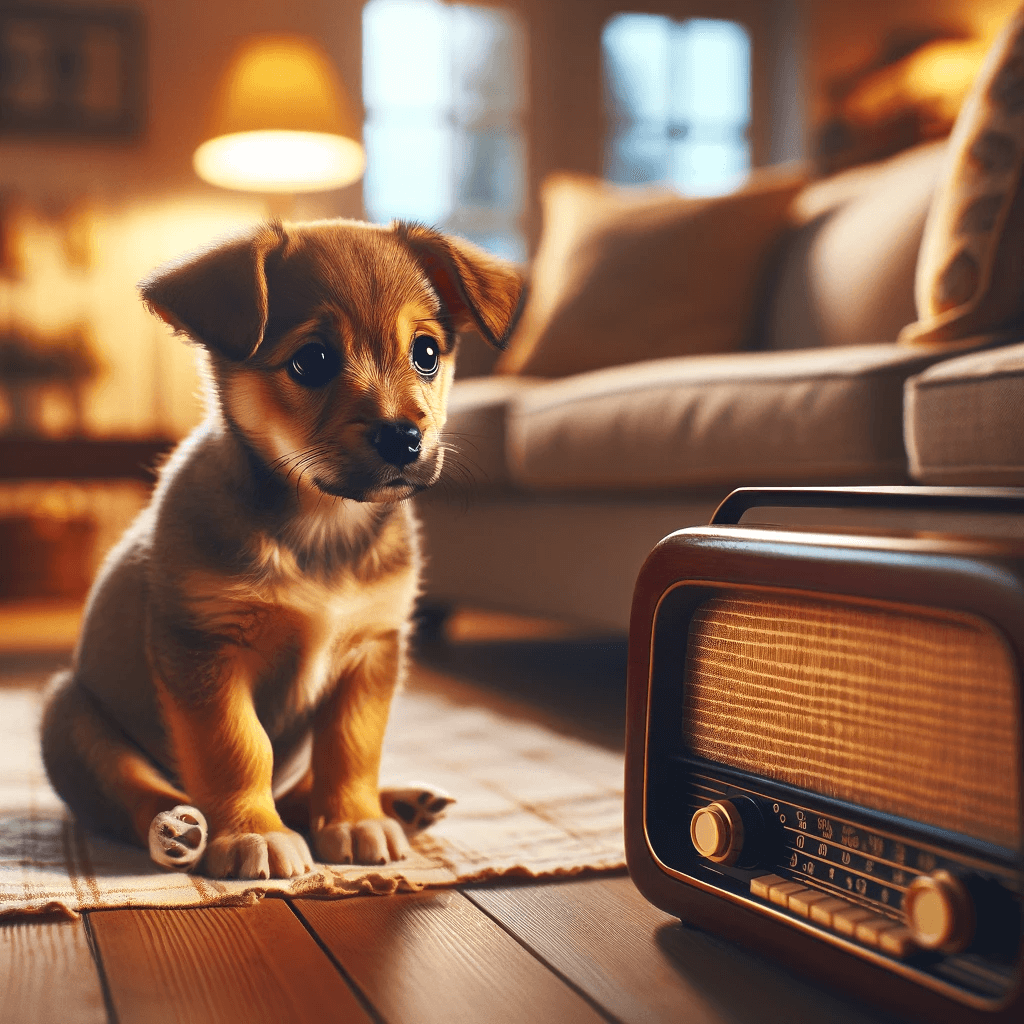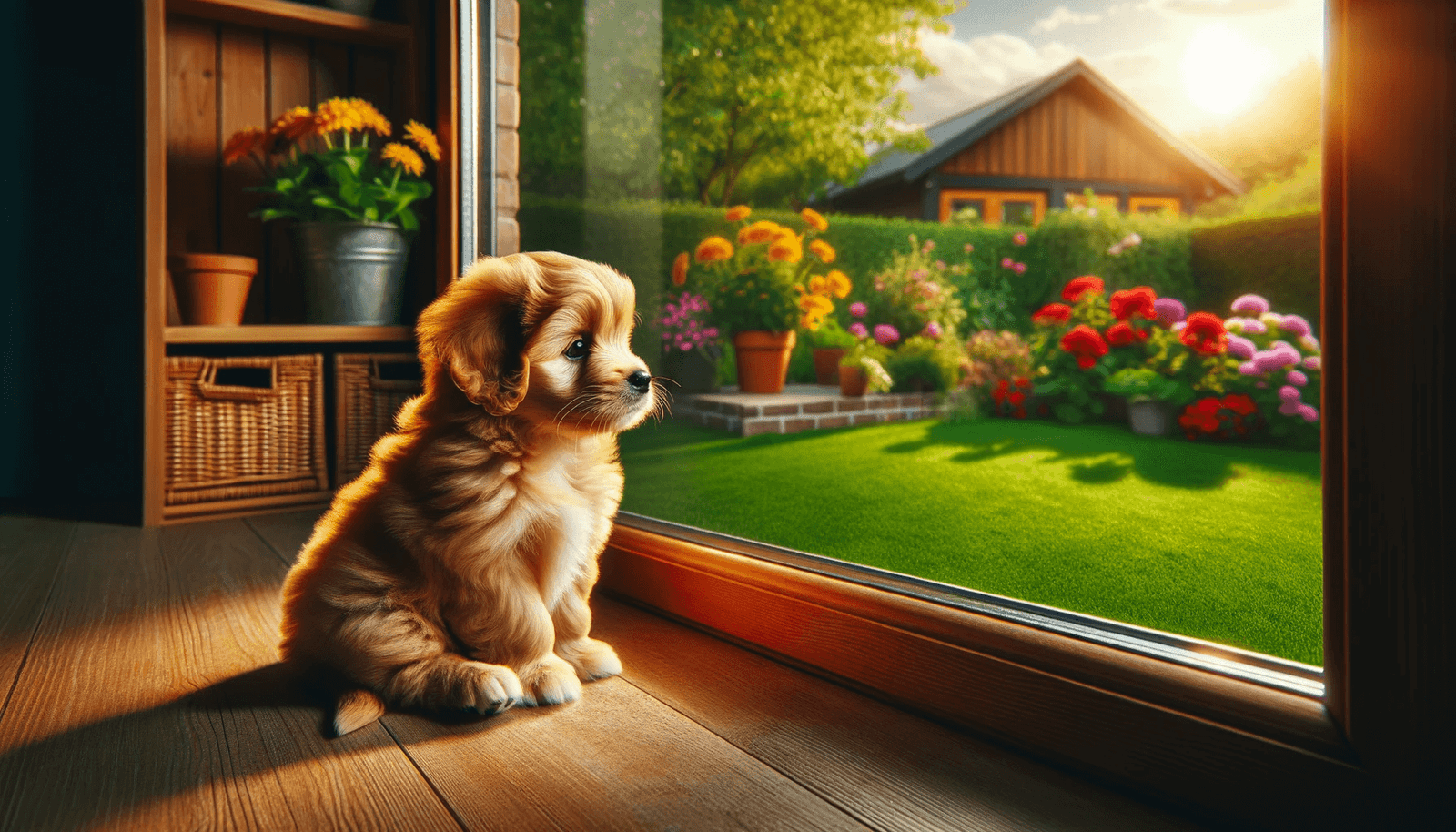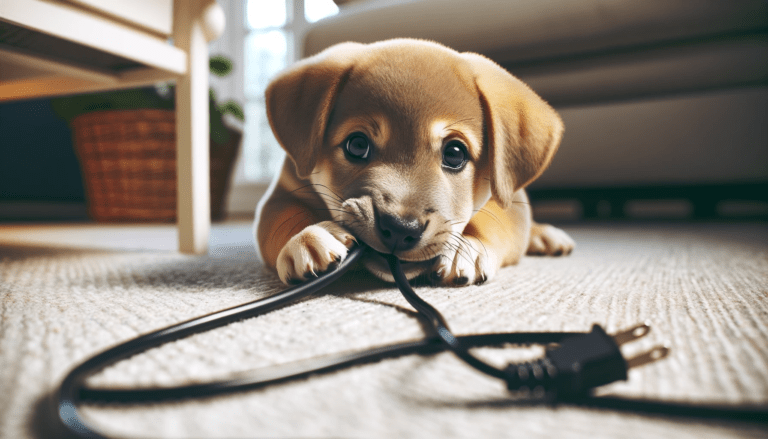How to Recognise and Manage Puppy Separation Anxiety
What is Separation Anxiety?
Separation anxiety in puppies is a distress condition that occurs when a puppy is separated from its owners or caretakers to who it has developed a strong emotional attachment. This condition is more than just a bit of temporary stress or sadness; it’s a serious emotional response that can affect a puppy’s mental and physical well-being.

At the core, separation anxiety reflects a puppy’s inability to cope with the absence of its family members. Puppies are naturally social creatures, and being alone doesn’t come naturally to them. This is particularly true for young puppies who have recently left the comfort and company of their littermates and mother.
It’s important to distinguish separation anxiety from normal puppy behaviour. While it’s common for puppies to initially feel uneasy or upset when left alone, those with separation anxiety experience extreme stress. Their response isn’t just a little whimpering or temporary upset; it’s displayed in more intense and prolonged behaviours.
Puppies with separation anxiety aren’t just ‘acting out’ or being ‘naughty.’ They’re experiencing a real sense of fear and distress. It’s a reaction to the loss of their primary social companions. The feeling must be very similar to panic in humans.
In this article, we’ll cover the signs and symptoms to look out for, the potential causes of this condition, and ways it can be addressed and managed.
Quick Answer
To spot separation anxiety in puppies, look for excessive barking, chewing, or restlessness when alone. Treat it by gradually increasing alone time, providing toys, and creating a calm environment. Seek a vet’s advice for severe cases.
Signs of Separation Anxiety in Puppies
Separation anxiety in puppies is a common issue where a puppy shows signs of distress and behavior problems when separated from its owner or left alone. Common signs and symptoms include:
- Excessive Barking or Howling: Puppies with separation anxiety often bark or howl excessively when left alone.
- Destructive Behaviour: Chewing on furniture, digging, and destroying household items can be a sign of separation anxiety.
- Pacing: Pacing in a fixed pattern or path when left alone is another common symptom.
- Escaping: Trying to escape from the area where they are confined, which can lead to self-injury.
- Urination and Defecation: Even if housetrained, a puppy may urinate or defecate inside when experiencing separation anxiety.
- Coprophagia: In some cases, puppies may consume their own excrement when left alone.
- Excessive Salivation, Drooling, or Panting: These can be signs of stress in your puppy.
- Changes in Eating Habits: Refusing to eat when alone, but eating normally when the owner is present.
It’s important to add that some of these behaviours can also be typical of young puppies adjusting to their new home and may not always indicate anxiety.
Use the table below as a guide to differentiate between normal puppy behaviour and signs of separation anxiety.
| Normal Puppy Behaviour | Separation Anxiety Signs | |
|---|---|---|
| Context | Occurs in various situations, not just when left alone. | Mainly when the puppy is separated from its owner or left alone. |
| Intensity & Duration | Mild and short-lived. Puppies may chew or bark but stop or can be redirected. | Intense and prolonged. Persistent even long after the owner has left. |
| Consistency | Not consistent every time the puppy is left alone. | Consistent and predictable, happening every time the puppy is left alone. |
| Training & Diversions | Responds well to training and can be distracted by toys or treats. | Less responsive to training or distractions when alone. |
| Physical Stress Signs | Occasional, mild stress signs. | Pronounced signs like excessive drooling, panting, or self-injury. |
| Housetraining | Occasional accidents expected in young puppies. | Regular accidents in housetrained puppies, especially when alone. |
| Destruction | Chewing normal for teething; doesn’t cause severe damage. | Extreme destruction, such as chewing through barriers, when alone. |
Causes of Separation Anxiety in Puppies
Separation anxiety in puppies can be caused by various factors, often involving a combination of genetic, environmental, and life experience influences. Common causes include
- Lack of Early Socialisation: Puppies that don’t experience a variety of people, places, and situations during their important socialisation period (usually up to about 12-14 weeks of age) may develop anxiety, including separation anxiety.
- Early Traumatic Experiences: Puppies that have had traumatic experiences, especially related to abandonment or frequent changes in their living environment, may be more prone to separation anxiety.
- Changes in Routine or Environment: Dogs are creatures of habit, and significant changes like a move, a new family member (human or pet), or a change in the owner’s schedule can trigger separation anxiety in sensitive puppies.
- Over-Attachment to the Owner: Puppies that form an excessively close bond with their owner and rarely spend time alone may struggle when they are suddenly left alone.
- Genetic Predisposition: Some breeds or individual dogs may be genetically more prone to anxiety disorders, including separation anxiety.
- Removal from Litter at a Very Young Age: Puppies taken away from their mother and littermates too early may miss out on important developmental stages and learning, which can contribute to anxiety issues.
- Sudden Change in Family Circumstances: Loss of a family member, either human or another pet, can lead to separation anxiety as the puppy deals with the change in their social group.
- Inadequate Training: Puppies that haven’t been taught to cope with being alone through gradual training may develop separation anxiety.
Understanding these causes can help in both preventing and treating separation anxiety in puppies.
How to Prevent and Treat Separation Anxiety
Preventing and treating separation anxiety in puppies involves a combination of training, environmental management, and sometimes professional help. Here are some strategies:
Prevention
- Early Socialisation: Expose your puppy to a variety of people, places, and experiences early on to build confidence and adaptability.
- Gradual Training: Teach your puppy to tolerate being alone gradually. Start with short periods and slowly increase the duration.
- Create Positive Associations: Make alone time positive by providing special toys or treats that the puppy only gets when alone.
- Establish a Routine: Consistent daily routines can help your puppy feel more secure.
- Encourage Independence: Encourage your puppy to spend time alone even when you’re home, to prevent over-dependence on your presence.
- Exercise and Mental Stimulation: Regular physical exercise and mental stimulation can reduce anxiety and excess energy.
Treating Separation Anxiety
- Desensitisation and Counterconditioning: Gradually expose your puppy to being alone for longer periods, paired with positive experiences. This can help reduce anxiety over time.
- Professional Training: Consider working with a dog trainer or behaviourist, especially for severe cases.
- Environmental Enrichment: Provide engaging toys like puzzle feeders to keep your puppy occupied when alone.
- Crate Training: Proper crate training can create a safe and secure environment for your puppy.
- Medication: In severe cases, consult a veterinarian. They may prescribe medication to help manage anxiety.
- Consistent Departure Cues: Avoid making a big deal out of departures and arrivals to reduce anxiety associated with these events.
- Alternative Therapies: Some owners find success with pheromone diffusers, calming music, or anxiety wraps. (Owners report mixed results with anxiety wraps.)
- Positive Reinforcement: Always use positive reinforcement. Never punish your dog. Punishment can make anxiety issues worse.
- Keep a Radio On When You Leave: Leaving a radio or playing soft, calming music can provide a soothing background noise for your puppy. Classical music is often recommended as it has been shown to have a calming effect on dogs.
- Scent Familiarity: Leaving an item with your scent, like a worn t-shirt, can comfort your puppy by making them feel closer to you.
- Practice Short Absences: Gradually acclimate your puppy to being alone by leaving them for short periods at first and then slowly increasing the time.

General Tips
- Patience and Consistency: Be patient and consistent in your approach.
- Monitor Progress: Keep an eye on your puppy’s progress and adjust strategies as needed.
- Seek Professional Help: Don’t hesitate to seek help from professionals if needed.
Remember, each puppy is unique, so what works for one may not work for another. It’s important to tailor your approach to your puppy’s specific needs and personality.
Thanks for reading. Please share this article if you think it will help a dog or owner, and please leave a comment below if you have any additional tips or questions. We’d love to hear from you!







